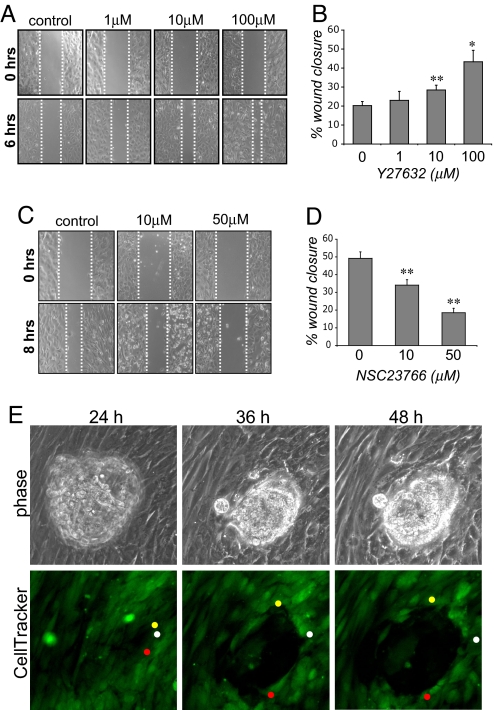Fig. 4.
Regulation of hESC motility by RhoA, Rac1, and the human embryo. (A) Treatment of hESCs with Y27632 increases cell motility in wound-healing assays. Cells were treated with the indicated amounts of Y27632 before wounding. Wound width was analyzed 0 and 6 h after wounding. (B) Wound closure, expressed as a percentage of the width of the initial wound, is increased after Y27632 treatment. Significant differences between control and Y27632-treated cells are indicated by * (P < 0.05) and ** (P < 0.01). (C) NSC23766 treatment decreases hESC motility in wound-healing assays. Cells were treated with the indicated amounts of NSC23766 before wounding. Wound width was analyzed 0 and 8 h after wounding. (D) Wound healing (displayed as above) is significantly reduced after NSC23766 treatment. (E) Increased motility of hESCs at the implantation site is observed during time-lapse imaging of human embryos implanting into CellTracker Green-labeled hESCs. The movements of three individual cells are tracked by colored circles.

